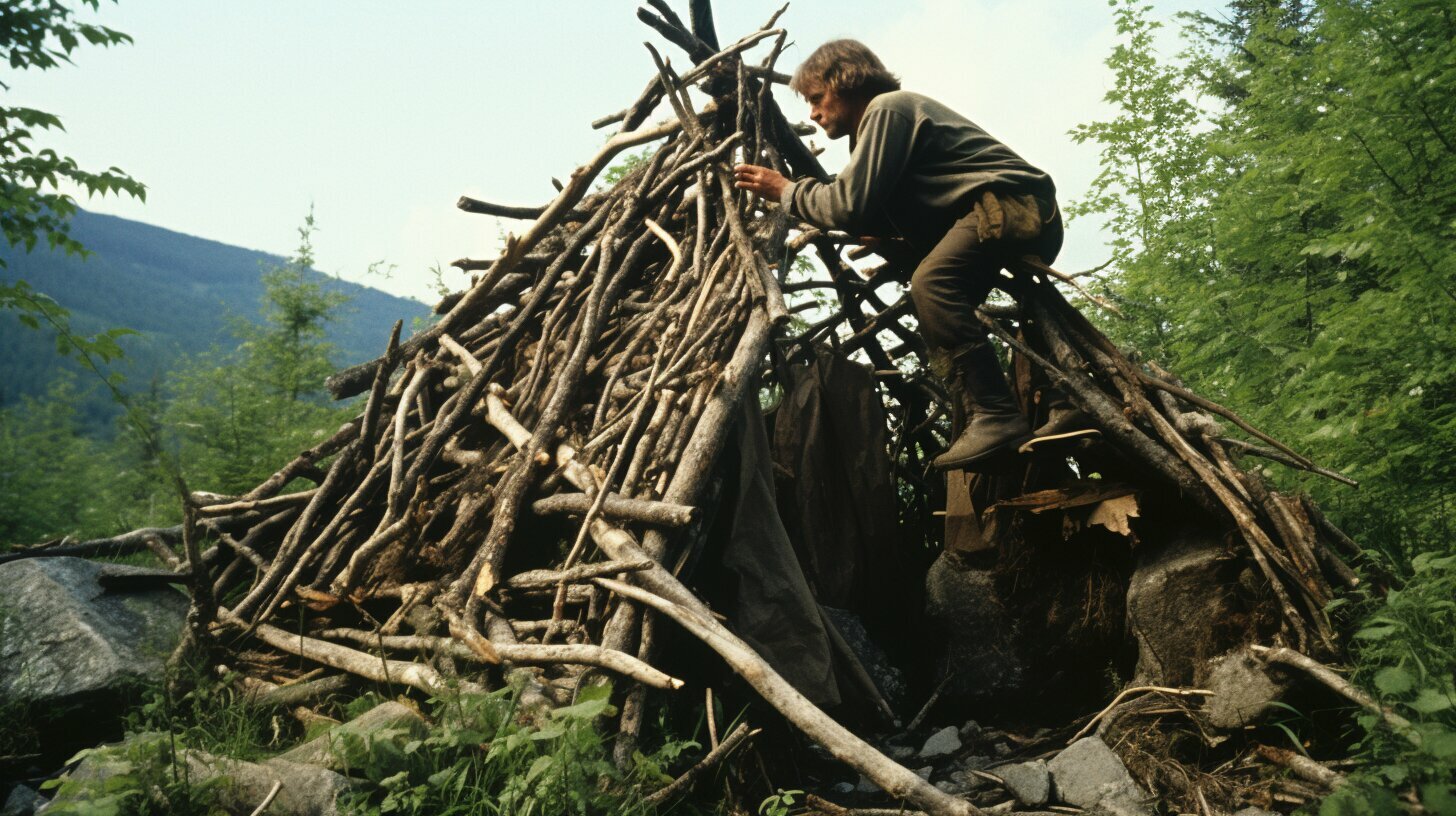Are you planning a wilderness adventure? Whether you’re a seasoned outdoorsman or a beginner, mastering wilderness survival techniques is essential for a safe and enjoyable experience. The wilderness can be unpredictable and dangerous, and it’s crucial to have the skills and knowledge necessary to handle any situation that may arise.
In this guide, we’ll cover the basics of wilderness survival skills, essential tools and gear, and strategies for navigating and procuring food and water in the wild. With these skills, you’ll be prepared for any outdoor adventure and able to enjoy the beauty and serenity of nature with peace of mind.
Key Takeaways
- Mastering wilderness survival techniques is essential for a safe and enjoyable experience in the wild.
- The wilderness can be unpredictable and dangerous, and it’s crucial to have the skills and knowledge necessary to handle any situation that may arise.
- In this guide, we’ll cover the basics of wilderness survival skills, essential tools and gear, and strategies for navigating and procuring food and water in the wild.
Essential Wilderness Survival Skills for Beginners
When venturing into the wilderness, it is crucial to have basic survival skills in order to stay safe and self-sufficient. Here are some essential wilderness survival skills to learn as a beginner:
Building a Shelter
One of the most important skills to learn is how to build a shelter. A shelter can protect you from the elements and provide a safe place to sleep. Look for natural cover like caves, overhangs, or fallen trees. If you need to build a shelter, use materials like branches, leaves, and bark.
Disclosure: When you buy through links on our site, we may earn an affiliate commission.
Finding and Purifying Water
Water is essential for survival, but it may be difficult to find in the wilderness. Look for water sources like streams or lakes, and use a water filter or purification tablets to make sure it is safe to drink.
Starting a Fire
A fire can provide warmth, light, and a way to cook food. Use a fire starter like matches or a lighter, and gather materials like dry leaves, twigs, and branches to keep the fire going.
Navigating Without a Compass
In the wilderness, it is important to know how to navigate your surroundings without a compass. Learn how to read the sun and stars, and use natural landmarks like mountains or rivers to guide your way.
By mastering these basic survival skills, you’ll be better prepared for any challenges you may face in the wilderness.
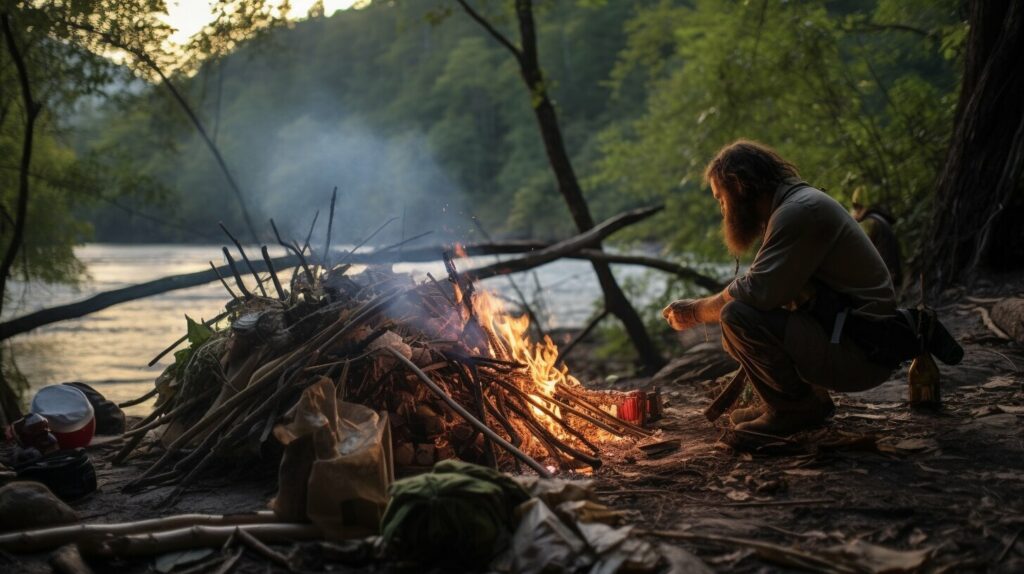
Outdoor Survival Tips: Staying Safe in the Wild
When venturing into the wilderness, it’s important to have a solid understanding of survival skills in the wild. The outdoors can be unpredictable, and being prepared with the right knowledge can mean the difference between life and death.
Here are some outdoor survival tips to help you stay safe in the wild:
- Identify and avoid potential dangers: One of the most important skills for survival in the wild is knowing how to identify and avoid potential dangers. This includes recognizing poisonous plants and animals, steering clear of unstable terrain, and being aware of natural hazards like flash floods or avalanches.
- Deal with wildlife encounters: Wildlife encounters are a common occurrence in the wilderness. Knowing what to do in these situations can make all the difference. Remember to stay calm and give the animal plenty of space. Avoid sudden movements and loud noises, and make yourself appear larger if necessary.
- Stay healthy and hydrated: Staying healthy and hydrated is essential for survival in the wild. Make sure to drink plenty of water and source it from safe and reliable sources. Take care of any injuries or illnesses promptly and practice good hygiene to avoid infection.
- Prepare for inclement weather: The weather can change quickly in the wilderness, so it’s important to be prepared for all conditions. This means carrying appropriate clothing and gear for a variety of scenarios, including rain, snow, and extreme heat or cold.
- Stay oriented: Navigating the wild can be challenging, especially if you don’t have a compass or map on hand. However, there are other techniques you can use to stay oriented, such as following natural landmarks, observing the position of the sun or stars, and using your senses to detect changes in the environment.
“Remember, the key to surviving in the wild is to stay calm, stay safe, and stay prepared.”
Mastering Bushcraft Survival Strategies
If you are looking to master wilderness survival techniques, then you cannot afford to ignore the art of bushcraft. The term “bushcraft” refers to the set of skills and strategies used for survival in the wilderness. These skills include foraging for food, constructing traps and snares, and using natural materials for tools and equipment.
Bushcraft survival strategies are essential for anyone who wants to take their wilderness survival skills to the next level. These skills require a great deal of knowledge and practice, and it is recommended that interested individuals consider wilderness survival training to develop the necessary skills and experience.
One of the most important aspects of bushcraft is learning how to forage for food in the wild. This involves identifying edible plants, berries, and insects that can provide sustenance in the absence of conventional food sources. It also involves learning how to find and catch fish or game for food.
| Bushcraft Survival Strategies | Wilderness Survival Training |
|---|---|
| Foraging for food | Learning necessary skills and experience |
| Constructing traps and snares | Mastering the art of bushcraft |
| Using natural materials for tools and equipment | Developing necessary skills |
Another important aspect of bushcraft survival is constructing traps and snares for catching food and providing self-defense. This requires knowledge of animal behavior as well as an understanding of different types of traps and how to construct them.
Finally, bushcraft strategies also involve using natural materials for building shelter, creating fire, and fashioning tools and equipment. This includes using materials like bark, leaves, and branches to construct a shelter or using rocks and stones to fashion tools and weapons.
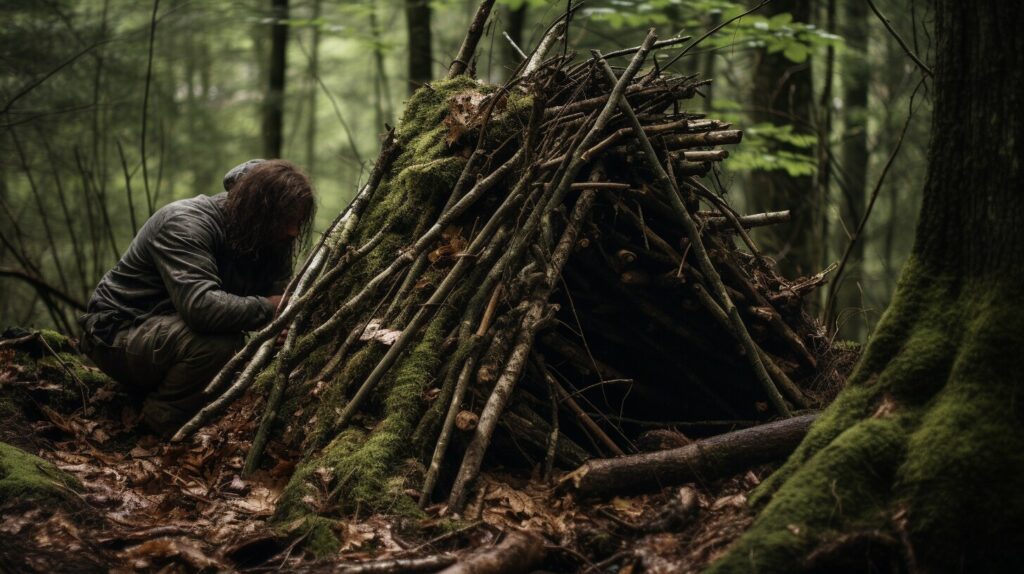
Overall, mastering bushcraft survival strategies is an essential component of wilderness survival training. By learning these skills, you can increase your self-reliance and improve your ability to survive in the wild.
Choosing Essential Wilderness Survival Tools
When venturing out into the wilderness, it is essential to have the right tools and gear to ensure your safety and survival. This wilderness survival gear checklist will guide you on the must-have items you need to include in your survival kit.
Knife: A sturdy and sharp knife is an essential tool for wilderness survival. It can be used for everything from cutting wood to preparing food and even self-defense. Choose a high-quality knife that is durable and reliable.
Compass: A compass is a vital tool for navigation in the wild. It can help you find your way if you get lost and guide you towards civilization. Make sure to learn how to use a compass before your trip.
First Aid Kit: A comprehensive first aid kit is crucial for treating injuries and illnesses in the wild. Include items like bandages, antiseptics, pain relievers, and any prescription medications you need to take.
Water Purification System: Access to clean drinking water is essential for survival in the wild. A water purification system like a filter or iodine tablets can help you safely and effectively purify water from lakes, rivers, or streams.
Emergency Communication Device: In case of an emergency, you need a way to call for help. A cell phone or satellite phone may not work in the remote wilderness, so consider a personal locator beacon or two-way radio instead.
Firestarter: Starting a fire can be a matter of life and death in the wild. Pack waterproof matches, a lighter, or a firestarter tool to make sure you can start a fire even in wet conditions.
By ensuring you have these essential wilderness survival tools in your kit, you will be better prepared for any situation that may arise in the wild. Remember to always practice proper safety protocols and learn the necessary skills to effectively use these tools.
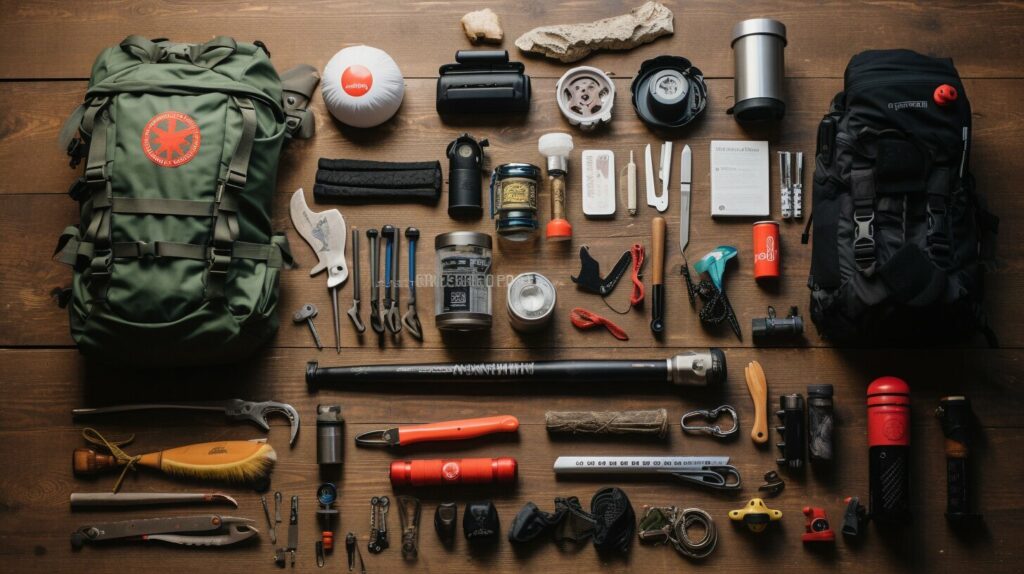
Navigating Without Technology: Finding Your Way in the Wild
When venturing into the wilderness, it’s important to have the skills and knowledge to navigate without the aid of technology. Whether you’re lost or just exploring new areas, knowing how to find your way is essential to staying safe and avoiding potential dangers.
To begin your wilderness navigation training, start by learning how to use a map and compass. A map can help you visualize your surroundings and plan your route, while a compass can help you orient yourself and navigate in a specific direction. There are many resources available for learning basic map and compass skills, including online courses, books, and outdoor training programs.
Another useful navigation technique is celestial navigation, which involves using the stars, moon, and sun to determine your location and direction. Learning how to identify constellations and stars can be a fun and rewarding experience, and can also help you find your way when other methods are not available.
Recognizing natural landmarks is also a valuable skill for wilderness navigation. Look for distinctive features like rock formations, streams, and hills to help guide your way and orient yourself on a map. Remember to take note of any landmarks as you travel, so you can use them to retrace your path if necessary.
In addition to these methods, it’s important to stay aware of your surroundings and be observant of changes in the environment. Watch for signs of animal activity or human presence, and use your senses to stay vigilant and alert. By combining these techniques and staying focused, you can master the art of navigating without technology and find your way in the wild.
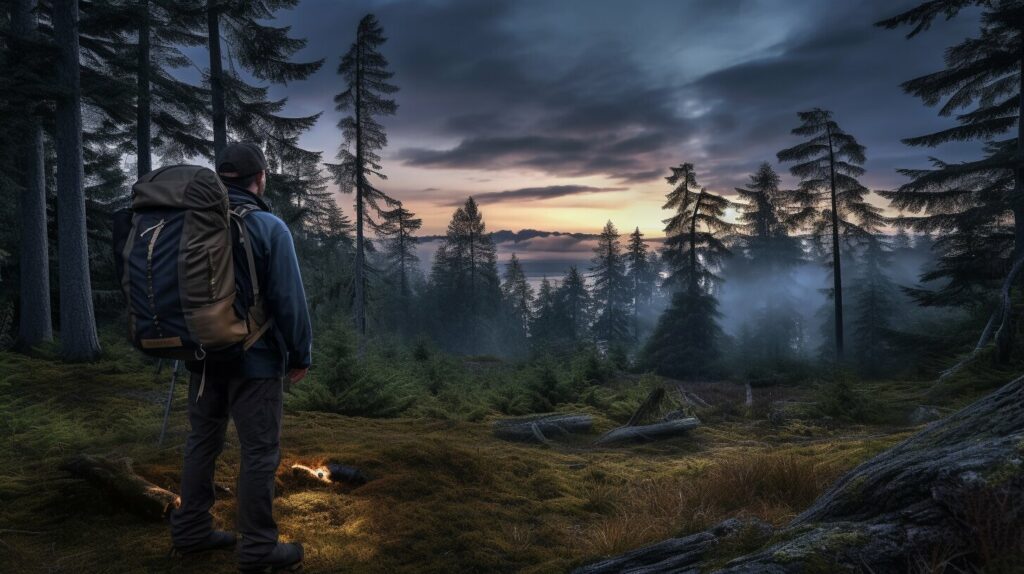
Don’t underestimate the importance of wilderness survival training for mastering navigation skills. There are many training programs and resources available that can help you enhance your abilities and build confidence in your navigation skills. Whether you’re a beginner or an experienced outdoors enthusiast, investing time and effort in your navigation training can pay off in countless ways.
Ensuring Food and Water in the Wild
When venturing into the wild, food and water are two of the most basic needs that must be met for survival. Here are some essential outdoor survival tips for ensuring access to these necessities.
Firstly, it is important to have a good knowledge of the area you are in and where water sources are located. You can often find water at the bottom of valleys, in streams and rivers, or in natural depressions. However, it is crucial to purify water before drinking it to avoid illnesses from harmful bacteria and viruses. You can use a filter, boil water, or use chemical treatments to purify it. Be sure to carry a reliable water bottle, water filtration system, and/or purification tablets.
When it comes to finding food, hunting and fishing are great ways to supplement your diet, but they require some skill. In addition, it is important to research the area’s wildlife and ensure that you are not hunting or eating any protected species. Foraging for wild edibles such as berries, nuts, and plants is another way to obtain food, but again, it requires some knowledge of which plants are safe to eat. Avoid consuming anything that you are unsure of, as some wild plants can be toxic.
Another option is to bring your own food supply or emergency rations. These might include high-energy foods such as protein bars and nuts which are lightweight and easy to carry.
Overall, it is important to be prepared and to have a plan for obtaining food and water in the wild. Outdoor survival tips like these can help ensure your safety and well-being in challenging conditions.
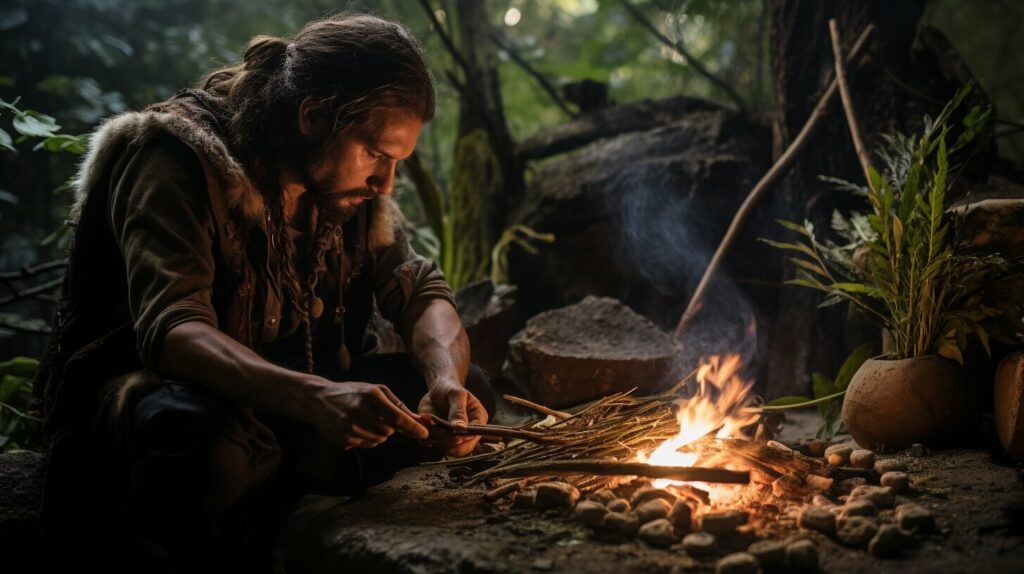
Staying Prepared: Wilderness Survival Training
Mastering wilderness survival techniques requires more than just reading about them. It takes practice, dedication, and expert guidance. That’s where wilderness survival training comes in.
Whether you’re a beginner or an experienced outdoor enthusiast, enrolling in a wilderness survival course can help you improve your skills and gain valuable knowledge. These courses are designed to provide hands-on training in essential survival skills, such as building shelter, starting a fire, finding and purifying water, and navigating without a compass.
Wilderness survival training programs are offered by a variety of organizations, including outdoor schools, wilderness outfitters, and survival experts. These programs range from single-day workshops to multi-week courses that cover a wide range of survival skills and strategies.
When choosing a wilderness survival training program, it’s important to consider your level of experience, the type of environment you’ll be training in, and the specific skills you want to learn. Some courses are geared toward beginners, while others are more advanced and require previous experience.
Many wilderness survival training programs also offer certification programs, which can be valuable for individuals who want to pursue a career in outdoor recreation or survival training. These certifications demonstrate proficiency in essential survival skills and can increase employment opportunities.
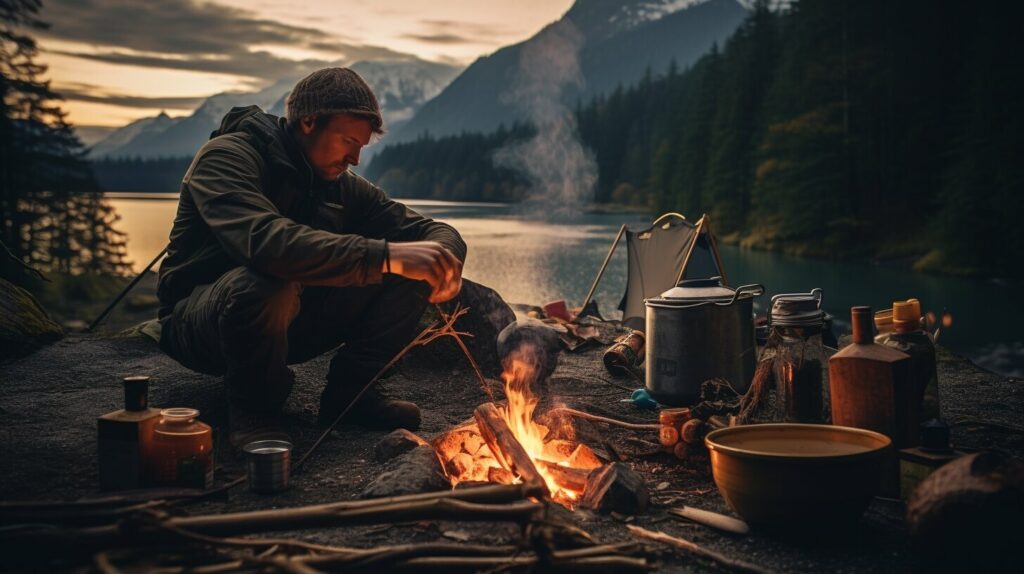
Whether you’re a casual hiker or a serious outdoorsman, wilderness survival training can help you stay safe and confident in the wild. With expert guidance and hands-on practice, you can master the skills and knowledge needed to thrive in even the most challenging wilderness environments.
Conclusion
As you can see, mastering wilderness survival techniques is essential for anyone who wants to enjoy the great outdoors safely and self-sufficiently. By learning basic survival skills like building a shelter, starting a fire, and finding and purifying water, you can increase your chances of survival in emergency situations.
Outdoor survival tips, like identifying and avoiding potential dangers and dealing with wildlife encounters, can prevent accidents and injuries. Understanding bushcraft survival strategies, like foraging for food and using natural materials for tools and equipment, can help you stay fed, hydrated, and equipped in the wild.
Choosing essential wilderness survival tools, like a knife, compass, and first aid supplies, can make all the difference in an emergency. Navigating without technology, like reading maps and recognizing natural landmarks, can help you find your way in unfamiliar territory.
By ensuring food and water in the wild, like locating and purifying water sources and recognizing edible plants and insects, you can stay healthy and nourished. And finally, staying prepared with wilderness survival training can ensure that you have the skills and knowledge you need to stay safe and self-reliant in the outdoors.
Remember, the wilderness is a beautiful and exciting place, but it can also be dangerous. By taking the time to learn and practice wilderness survival techniques, you can fully enjoy everything that nature has to offer while staying safe and self-sufficient.
FAQ
Q: What are the essential wilderness survival skills for beginners?
A: The essential wilderness survival skills for beginners include building a shelter, finding and purifying water, starting a fire, and navigating without a compass.
Q: How can I stay safe in the wild?
A: To stay safe in the wild, it is important to identify and avoid potential dangers, know how to deal with wildlife encounters, and take precautions to stay healthy and hydrated in challenging conditions.
Q: What is bushcraft survival?
A: Bushcraft survival is the art of using natural materials and resources to forage for food, construct traps and snares, and create tools and equipment for survival in the wilderness.
Q: What essential tools do I need for wilderness survival?
A: Essential tools for wilderness survival include a knife, compass, first aid supplies, and emergency communication devices. These items should be included in a survival kit.
Q: How can I navigate without technology in the wilderness?
A: Navigating without technology in the wilderness can be done by reading maps, using celestial navigation, and recognizing natural landmarks to find your way in unfamiliar territory.
Q: How do I ensure food and water in the wild?
A: To ensure food and water in the wild, you need to know how to locate and purify water sources, identify edible plants and insects, and effectively catch fish or game for sustenance.
Q: Why is wilderness survival training important?
A: Wilderness survival training is important because it enhances your skills and knowledge in mastering survival techniques. It prepares you to handle various situations in the wild and ensures your safety.

